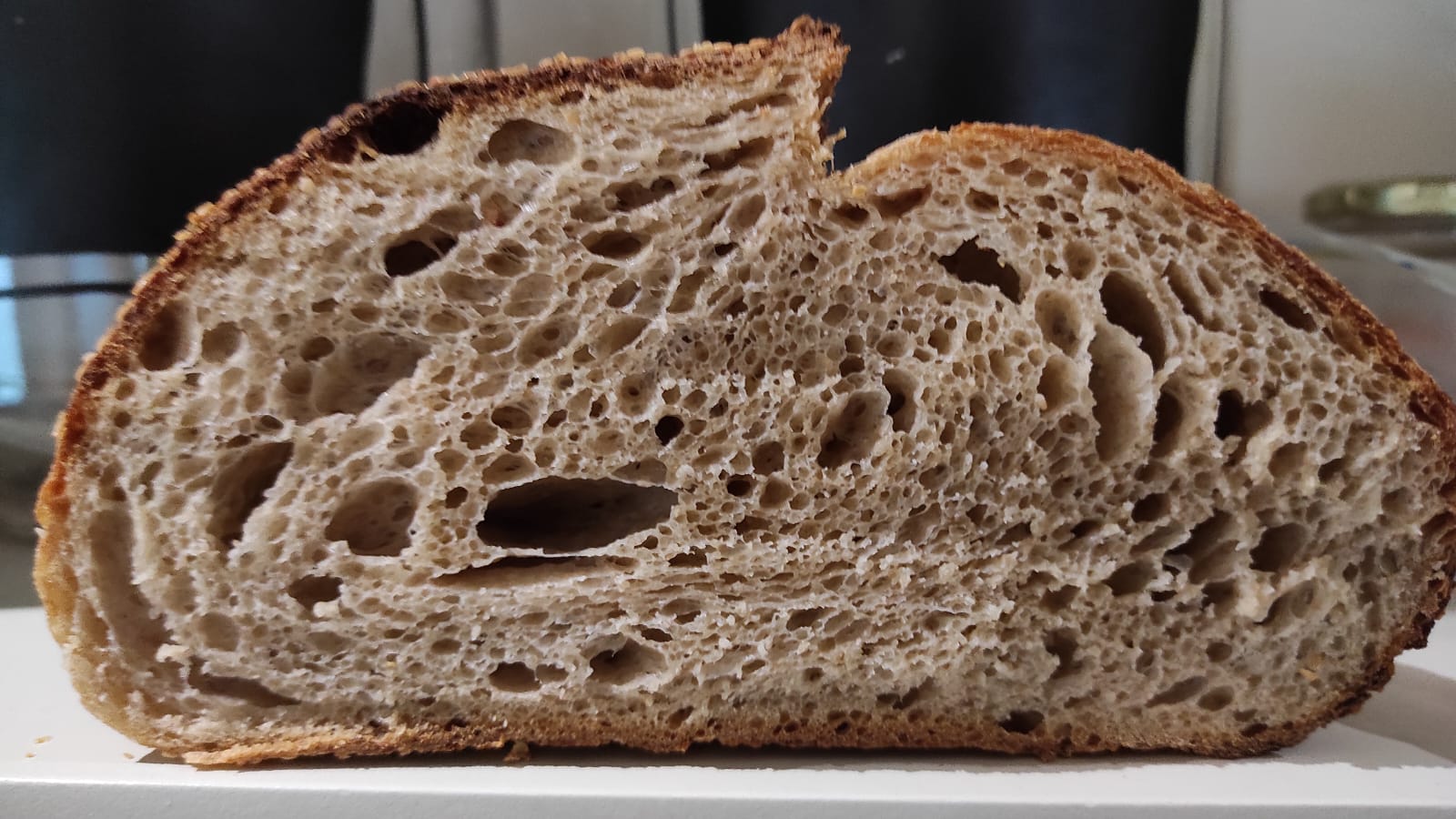Hello friends!
I’m keen to start baking sourdough and want to create my own starter. There are a slew of recipes online, but I’m keen to know your tips/tricks/ratios/steps to begin this journey.
Much love from this UK loaf lover 🥖
You can ask for some of an established starter from someone, but it is very easy to start you own.
Just water, flour, container. You do not need boiled potato skins, unwashed chili stems, organic grape skins, eye of newt, or tears from a virgin. You can use those of course (never tried newt or virgin, they probably work too) the flavor will be different though.
Any flour will work, wheat, teff, sorghum, millet, buckwheat, on and on. It it’s starch you can ferment it.
It may seem intimidating at first, but it’s pretty easy once you start playing around with it.
You can use tap water with chlorine/ chloramine, rain water, bore water that is heavy in iron/ silicates/ calcium. Nothing special needed there.
When I want to make a new starter I just grab a jar, fill it 1/3 full with whatever flour, add water to somewhere below the top, put the lid on, give it a shake, then forget about it for a few days. 3 or 4 days later (depending on what flour was used, and what temperature the room is) I pour half of it out to use in crêpes or something, no need to toss it. Add more flour and water, shake, wait. If you see bubbles or clear liquid (Hooch, alcohol formation on top) it is working. Hooch can be shaken back in, no need to pour it off. Keep doing those steps for anywhere from 3 weeks to 2 months (lots of variables here) and you have a happy starter.
Once established you can freeze your starter. Activity will be slower of course when you use it again. You can also dry it on baking paper or plastic wrap, that works fine for about 10 days if you need to travel with it.
As Anthony Bourdain related in Kitchen Confidential, ‘feed the bitch’. But also don’t stress about it.
Good luck, it will work out, if you find virgin tears let me know because I want to try them.
Thank you so much! I’m going to get it started this afternoon and see how I progress.
I’ve read the ratios of water and flour can be important - but is it fine to roughly measure 1:1 per your instructions?
Yes, 1-1 is fine, probably a bit easier to start out with too. If you end up with what looks like a thin batter when you first mix it that tends to be friendly to work with.
Heavy chlorination or high mineral content in water will slow the starter. Best to start with a pretty neutral water.
As long as the starter doesn’t smell ‘Off’, no visible mold growth, it will be fine. Even then you can often help your starter regain control through creative feeding where your desired yeast and bacteria ‘go medieval’ on the baddies. I wouldn’t recommend that starting off though, if it’s bad just toss it.
I’ve never had a starter fail, but I have had some that tested my faith before they saw the light.
Haha, sounds perfect. Can’t wait!
I’ll attempt to source some of those virgins tears just in case things go sideways 💕
Best way, I think is combining a small amount of flour and water to start, maybe 15 grams each. There’s no reason to waste a lot. After that’s had a couple days of room temperature in a jar, you can discard half (use in something else) and add 15 grams of flour and water again. A few iterations of that should get you a usable starter, but it takes a while for it to settle into being stable and predictable, maybe even months, depending on how often you feed it, and what temperature it’s at. Put a rubber band around the jar where the level of the starter is when you feed it, and you can time how long it takes for it to ferment. Ideally, you’d feed it right when it gets to it’s highest level, but no one probably does that unless they are a baker who wants super consistent dough.
The type of flour doesn’t necessarily matter, but I would just use whichever flour you want to bake bread out of. Theoretically, the bacteria and yeast will reach some sort of equilibrium with the nutrients available in that specific flour.
Lots of guides online will have you keeping a fairly large volume of starter, and dumping it right into your dough. That’s the way you’d want to do it if you were a pro baker who had to make bread every day, but for most of us, it’s kinda wasteful. I keep about 60 grams of starter going in a little jar, and I just pull off half and step it up over one day to use the next. I never discard any starter.
Lastly, don’t follow any guides that give you exact times for anything. It’s all so dependent on your starter and the temperature in your kitchen. You need to only look at how it rises and adjust from there. Don’t be too intimidated, though, people figured out sourdough thousands of years ago. The worst thing that happens is that it doesn’t look as pretty as you’d like.
Could try asking a good bakery around for a little starter.
Oh yeah, great idea! What steps would you take to maintain that?
You just need to feed it regurarly. If you store it in the fridge, it slows the process down but even then, once a week you need to get rid of old dough and add in some new flour (with some water potentially)
How did you get on?


